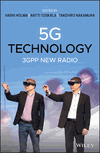Internet of Things Optimization
Summary
This chapter explains the Internet of Things (IoT) optimization technologies in 3GPP. It describes the general IoT evolution in 3GPP and discusses LTE-M and narrowband-IoT. The chapter then illustrates core network optimization, and presents the link budget, coverage and network capacity. It also discusses power consumption minimization and describes power consumption measurements. There are also alternative technologies for low-cost IoT connectivity, for example, LoRa and Sigfox. They are deployed on unlicensed spectrum and need a dedicated network which is not integrated into mobile networks. The chapter further illustrates the solution benchmarking. 5G enhances IoT connectivity in particular for industrial, vehicular, and other use cases where low latency and ultra-high reliability are important. 5G IoT focuses initially on industrial IoT with low latency and high reliability in Releases 15 and 16. The target is that low-cost IoT will utilize an LTE-based solution, and therefore, LTE IoT and 5G radios can coexist.



